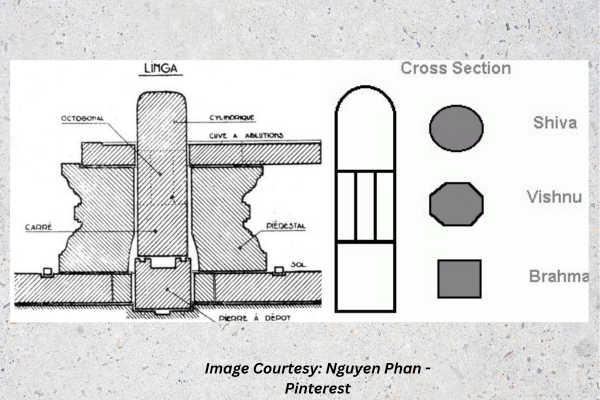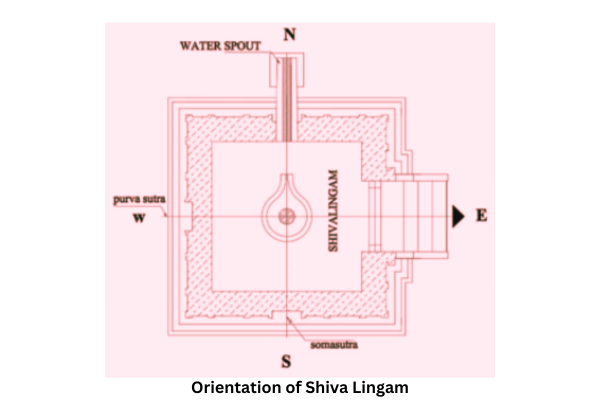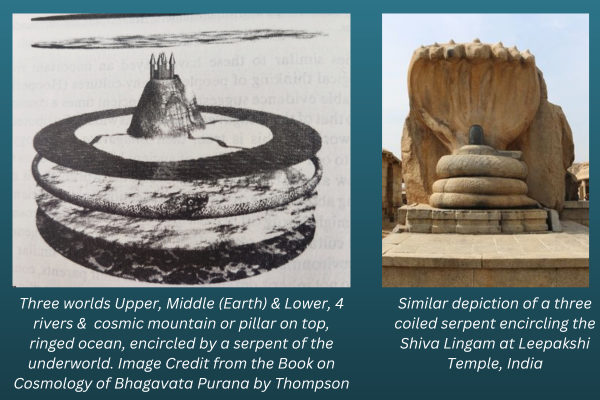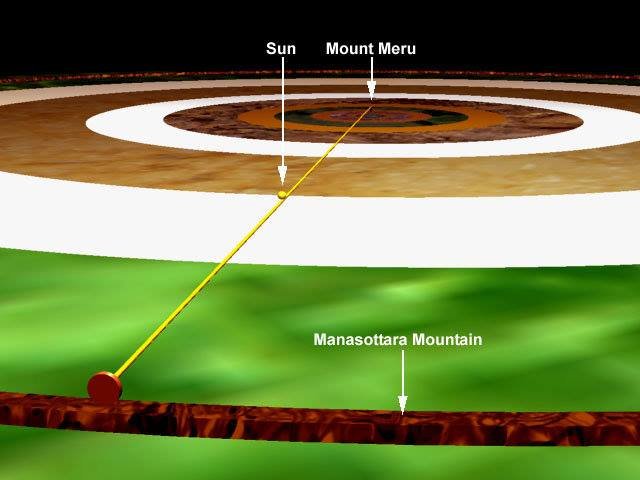Shiva Linga means a “symbol or mark of Lord Shiva” and considered a symbol that refers to the Infinite or Absolute Reality. Absolute Reality is Infinite cannot be realized through human senses which are “Finite”. The word “Linga” has several meanings like distinguishing mark, symbol, source, gender, sign, phallus etc. The meaning of any Sanskrit word is understood based on the context it is used.
Introduction:
In this two part blog on Shiva Lingam, the following topics will be discussed:
- Use of symbolism in Sanatana Dharma.
- Making of the Shiva LInga.
- Shiva Linga Cosmology & Origin of Pillar worship around the world.
- Pillar or Column of Fire – “Lingodbhava” Iconography.
- Understanding 330 million Gods, Sahasra Lingam & 33 Main Gods.
- Is Shiva Lingam mentioned in Vedas? (Special reference to Atharva Veda)
- Understanding the errors made while chanting the famous Mahamrityunjaya Mantra.
- Shiva Lingam as commonly understood as the symbol of sexual union between Man & Woman
Hinduism uses Six Pramanas, in order to gain precise knowledge. “Pramana” means proof that can establish truth or knowledge about something. Advaita philosophy believes in Six Pramanas (<click here for more information) which are given below:
1) Pratyaksha: (direct perception): That which is understood through our five senses. (Supreme Brahman or Reality cannot be realized through direct perception as stated above).
2) Anumana: inference that follows from previously established fact or knowledge. If we see smoke it indicates Fire was the cause.
3) Shabda: scriptural testimonies. Gaining knowledge through words/texts of others living in society.
4) Upamana: Analogy & comparison based on similarities.
5) Arthapatti: presumption or assumption or logical deduction of a fact. If someone who obese is not eating during the day, we can presume he is eating during the night.
6) Anupalabdhi: non-recognition or non-perception. When an object is not present, it is a valid form of knowledge. (Example: There is no plate on the table).
Three Pramanas are commonly used as the main sources of knowledge 1) Anumana (inference) 2) Upamana (comparison) 3) Shabda (scriptures). In ancient times, spiritual knowledge was passed by Rishis to the scholars who were well versed in Vedanta – Upanishads, Gita & Brahma Sutras. They in turn passed knowledge on to their students through Gurukuls. Gradually this Gurukul system broke down after invasions of Bharat and Shiva Linga today is understood by most people as only the symbolic representation of the sexual union between male & female!
Use of Symbolism in Sanatana Dharma:
Sanatana Dharma or Hinduism always uses symbolism so that the followers understand its deeper concepts, views & ideas. These symbols therefore convey a very deep spiritual meaning. The foremost symbol is the word Symbol of AUM, the primordial sound (<click here to know more from my previous blog). It is chanted during mantras/prayers to invoke the Gods. The other powerful symbol in Hinduism is the Swastika symbolizing “well- being” (Su meaning “Good” & Astika meaning “there is”). Some more popular symbols are the color Saffron symbolizing Fire, which means purity and surrender to the supreme Godhead, Lotus flower that represents purity & spiritual enlightenment, Snake or Serpent which symbolizes caution, re-birth, Ego, Divine Energy etc. There are many such examples. Similarly, all idols of Gods & Goddesses & Rituals in Hinduism also reflect profound symbolism.
As stated in my previous blog on Hindu Temple (<click here fore more), there are three forms of idol worship as per Agama Shastras. 1) Sakala which is morphic or having shape or form where the physical features are clearly visible. 2) Nishkala which is Amorphic or having no defined shape or formless or symbolic, like the Shiva Lingam 3) Sakala-Nishkala which is a combination of form & formless; for example a face of Shiva sculpted on a lingam. Just like the multitude of Hindu Gods & Goddesses are represented symbolically, the Shiva Linga has also to be considered as one such symbol, which represents Infinite Reality.
Making of a Shiva Linga:
There are two major types of Lingas: 1) Svayambu Lingam (naturally formed Lingam, which may not have a pillar shape) & Baana Lingam or Narmada Lingam (an Elliptical stone Lingam found in the Narmada river and when installed on the Yoni base, the narrow side will be at the bottom & wider side will be facing up. Today, Lingams that are naturally made by the flow of the river waters are very rarely found) 2) Man Made Lingam or chiseled Lingam. When the Lingam is not made of stone, it is called Manilingam.
Secondly, manually chiseled Granite/Stones have three genders. Shilpa Shastra provides insights into how to identify these stones based on male, female & neutral types. A Shilpa Acharya (Temple Sculptor) is able to identify the resonant variety of stones based on 1) Shape 2) Sound produced 3) Lines present on the stones. While making a Shiva Lingam, the shaft (Linga) is made with male stone, the Yoni (middle or pedestal) portion with female stone and base is with neutral stone. As stated in my previous blog on “Hindu Temple”, black granite provides the highest vibration compared to other granite stones and is therefore the preferred stone in making the Shiva Linga.
All matter goes through the process of creation (representing Brahma), preservation (representing Vishnu) & destruction (representing Rudra). So the Linga (shaft or pillar alone) also has been designed accordingly, as a single piece based on these 3 states of creation, preservation & destruction. The lower “Brahma or the Creation” portion is square in shape having Sattva Guna, the middle “Vishnu or maintenance/sustenance” portion is octagonal (8 sided) in shape having Rajasic Guna and the top “Rudra or dissolution” portion is cylindrical in shape and its cross section is “circular” having Tamas Guna. A Circle has no beginning or end, it is Infinite and is equated to the Supreme Reality! You may refer my blog on Gunas (<click here if you need more information on the same).
As per Agama Shastra, the Shiva Linga should have on its Rudra or top portion, a “Brahma Sutra or the central balancing axis line” forming three lines also known as “Lakshnodharam” merging into a lotus bud shape, in order to qualify it as “fit for worship”(see images below). There is a procedure to be followed by the Sculptor, while marking these lines on the Rudra portion of the Shiva Linga. Once the Linga shaft is inserted into the Yoni base, only the Rudra portion is visible and not the Brahma & Vishnu portions as they are inside this base. The visible part signifies the world of plurality or manifest, Shakti. The lower invisible part is the un-manifest or Supreme Consciousness.
Just like the Lingam has various meanings, Yoni also has various meanings which include womb, vagina, place of birth, source, origin, abode etc. Verse 1.1.6 of Mundaka Upanishad uses the term Bhūta-Yoni which means “source of beings” and this imperishable source is the Absolute Brahman, the material cause of this world! But in the context of making of the Shiva Lingam, Yoni merely means to “join, connect or unite”. Shiva is also known by the name – “Sthanu Ishana Jishnu”. (Sthanu means Fixed, immovable, motionless or unchanging just like the Linga. Ishana means Magnificent Lord and Jishnu is the Victorious one).
Shiva Lingam has to be installed exactly at the intersection of the East – West and the North –South cardinal directions. The water spout (Gomukha) will always face the North. The three facial lines called “Lakshnodharam” together with the “Brahma Sutra” or the center line has to face the East direction towards the priest & the devotee.
Shiva Linga Cosmology – Origin of Pillar worship around the world:
Before we delve on the cosmological aspects of the Shiva Linga, we will look briefly at the Cosmology given in the Bhāgavata Purāņa (one of the 18 Mahāpurānas), to understand the origin of sacred mountain or pillar worship, leading to the worship of Shiva in shape of formless Linga.
Introduction:
Bhāgavatam or Bhāgavata Purāna has been written in a language that is very old and difficult to understand. It showcases astronomy in geographical & mythological language therefore cannot be translated literally. Literal translations of Hindu scriptures can give absurd meanings. In ancient times correct knowledge was expressed in mythological terms, in story form so that people can easily remember it. (Every verse in the scriptures has several meanings and this is why “Puranas” are difficult to interpret unless its allegory is clearly understood).
In modern astronomy, the elements presented has a direct one on one relationship to the elements of the Universe. But in Bhāgavatam, the Universe is described based on multi-dimensional system (many universes or multiverse) and different aspects of the Universe are expressed using different models (meaning there is no single model). Each universe is enclosed in a spherical shell.
Bhāgavatam uses stereographic projection of earth sphere to show the earth as “disk” and some mistook this as a reference made to earth being flat! (Stereographic projection is a mapping that projects a sphere on to a plane). Bhu-mandala consists of upper & lower regions and is enclosed by a shell with the earth as the middle region. This shell together with is contents of called Brahmānda (Brahma’s Egg). The three stage world disk therefore consists of the central continent, four directional rivers, cosmic mountain inhabited by demigods, ring shaped ocean, upper & lower worlds and the serpent of the underworld holding all of them together as given in the images below:
As per Richard Thomson’s book on the “Cosmology of Bhāgavata Purana”, four different aspects are presented in Bhāgavata Purāna: 1) Earth globe is mapped into a plane using the stereographic projection method. 2) It shows the map of planets that orbit earth. 3) Local map of India together with the Himalayan region and surrounding areas of south central Asia. 4) Map of celestial regions where the demigods live.
Bhū-mandala (or earth disk) is divided into various oceans & islands (Dvipas). In the center of Bhū-mandala there is a land called Jambūdvipa (derived from the name of the Jambū tree that grows there). In its center is a golden SUMERU or MOUNT MERU mountain that is shaped like a “PILLAR” that is wider at the top than at the bottom.
In Bhāgavatam, the Sun travels on a chariot (to be understood metaphorically). The axle of the chariot rests at one end on Mount Meru and the other end is connected to a wheel that rotates on the circular strip of Mānasottara Mountain (huge ring shaped mountain). As the Mount Sumeru is higher, the axle has to be held on the other side by a giant wheel as well to sustain the rotation. Thus the sun travels in its chariot on the top of this mountain in an orbit called the Saṁvatsara, encircling Mount Meru. The sun’s path on the northern side is called Uttarāyaṇa, and its path on the southern side is called Dakṣiṇāyana. The above details are depicted in the following image (< Image source):
On top Sumeru is Brahmapuri or the city of Brahma together with 8 cities of the demigods {Vayu (NW), Kubera (N), Ishāna (NE), Varuna (W), Indra (E), Niruti (SW), Yama (S) & Agni (SE)}. The center portion is allocated to Lord Brahma. The celestial Ganges (Milky Way) flows on to the top of Brahmapuri and drops down along Sumeru in the form of four rivers that flow in four cardinal directions (E, S, W & N). The Sun & Moon revolve around with Mount Sumeru as its central axis.
The main aspects mentioned above are summarized in the image below:
In conclusion, the above cosmological concept of mountains & pillars found in Bhāgavata Purāna have also been found in many cultures around the world. The mountain is also surrounded by other sacred mountains located in four cardinal directions. There is an immortal “World Tree” also known as the “Tree of Life” that grows on top of this world-mountain. It extends from earth to the heavens and rivers of various substances (milk, honey, oil etc.) also flow from there.
In ancient times people understood the world around them in this way. It also tells us that people across the world were indeed in contact with each other and exchanged ideas & views of the Universe. It is unlikely that people remained isolated but somehow all of them arrived at this same concept of the world around them. Essentially, each of these cultures used this concept of sky pillar or mountain and adapted it to their own local region that they found very sacred. Some examples of Mountain & Pillars from different belief systems around the world are taken from Richard Thomson’s book on the “Cosmology of Bhāgavata Purana” are given in the table below:
Belief System/Culture | Mountain or Pillar | Notes |
Puranic | Mt. Sumeru | Mountain shaped like pillar with Brahmapuri on top with 8 Deities or Loka-pālas |
Ancient Iran | Mount Hara Berezaiti or Mt. Albōrz | Celestial spring on the peak of the mountain |
Jain | Mt. Meru | Similar to Puranic texts. |
Buddhist | Mt. Meru | Similar to Puranic texts. |
China | Mt. Khun-Lun | Represents world-axis like Sumeru |
Mongols | Mt. Sumber or Sumer | Zambu tree at the peak. (Similar to Jambūdvipa where the Jambū tree grows). |
N.Asian, African, American tribes | World Pillar symbolized by a central post. | Seven divisions associated with the Polestar or Polaris |
Finns | Sampo, the cosmic mill | Perhaps derived from Sanskrit – Skambha or Stambha meaning pillar |
Navajos | Encircled moutain | Surrounded by mountains in four directions like Jambūdvipa |
Romania | Columna cerului | Axis Mundi or Sky Pillar |
Ancient Greeks | Mt. Olympus | Abode of the Gods |
Pillar worship at Göbekli Tepe, Turkey is shown below:
So from the above, we can now arrive at the origin of the concept of Shiva Lingam, in which the Axis Mundi or the Central Axle or Mt. Sumeru is now replaced by the Lingam. This pillar leads us to the concept of the “Pillar or Column of Fire or Light” which is elaborated in the next & final Part of my blog on Shiva Lingam, along with all the remaining topics mentioned at the beginning of this blog.
Shown below are two videos filmed by me against the backdrop of the night sky: 1) A high intensity Orb that comes from the right side of the screen and moves towards the direction of my camera. 2) A pillar of light. More videos of such pillars of light are also shown in Part 2 (Final Part of this blog on Shiva Lingam). From the movement made by these lights, it looks like these are beings from a higher dimension.







